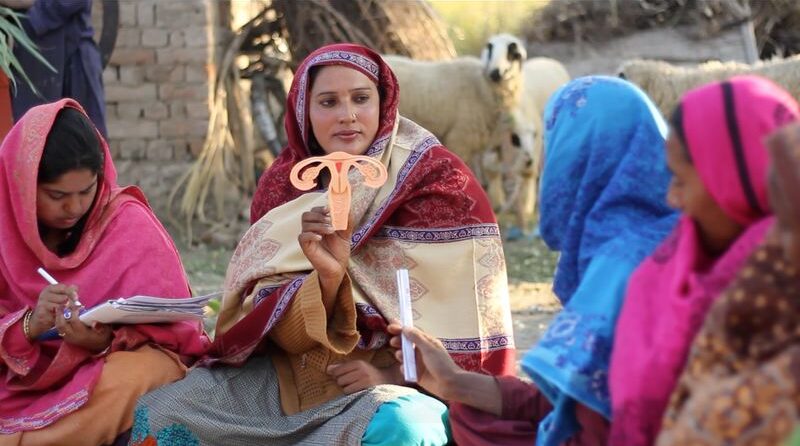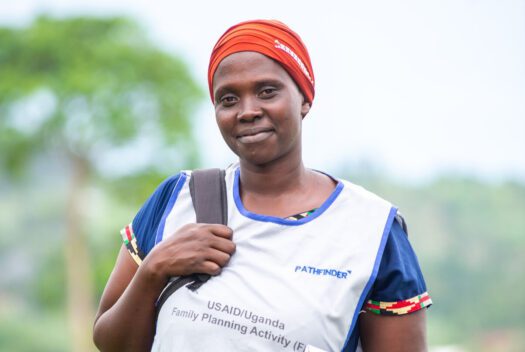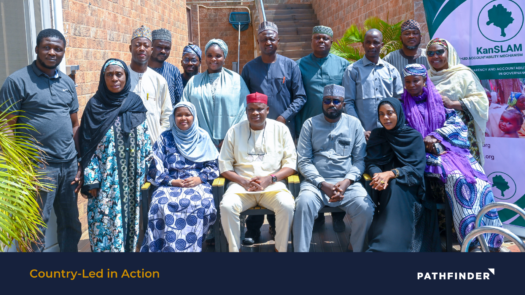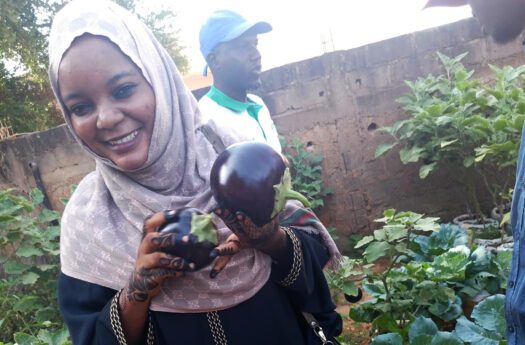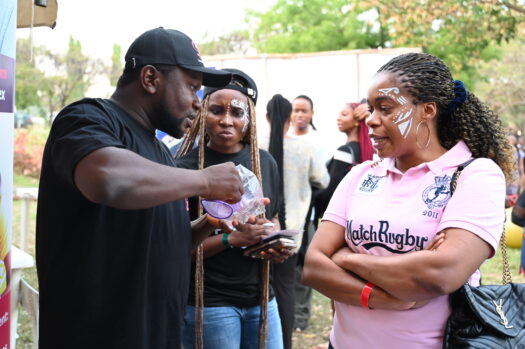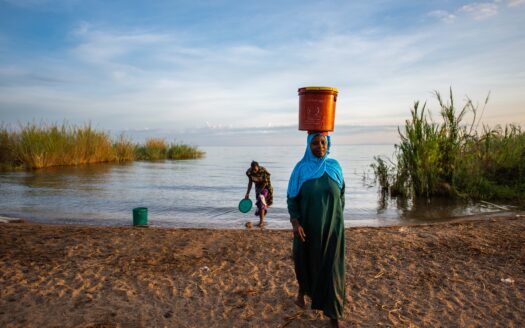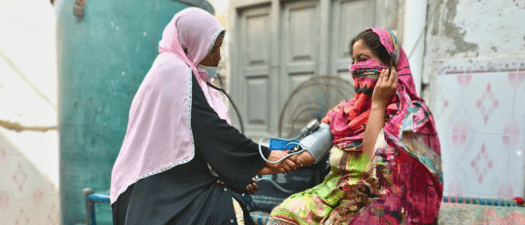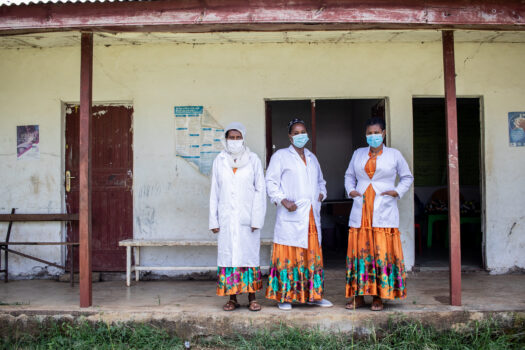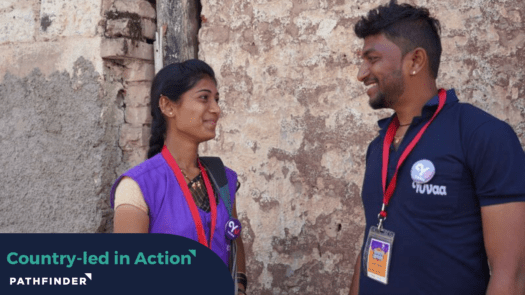An abbreviated version of this content appeared in Health Policy Watch during World Health Worker Week.
Each woman in the health workforce is powerful. When supported to do her job, she can transform lives, communities, and nations.
Women health workers deliver care to approximately 5 billion people. As nurses, midwives, and community health workers, they make up 70 percent of the global health workforce. Despite their essential roles, they are often devalued, serving in low-status jobs, with little or no pay. Investing in these women in the smartest investment we can make, offering an estimated 9:1 return on investment and contributing to women’s economic empowerment.
The immense potential of women in health
These women not only improve health—they contribute to gender equality by bettering the lives of women. They serve as role models in societies where women may be excluded from the public sphere. And they foster social cohesion.
Women are frontline caregivers to their families and communities. This gives them a special understanding of how to deliver healthcare, especially to women and children. They are essential to delivering primary healthcare in rural areas with weak health infrastructure. Women who are community health workers reduce the care burden on health clinics with shortages of nurses, midwives, and doctors.
By improving health, advancing sexual and reproductive health and rights, and by investing in their families’ health and education, women health workers can drive economic prosperity. They contribute to a better future for whole nations.
In today’s world, women health workers are essential to mitigating the health impacts of climate change. The World Economic Forum predicts the climate crisis will cause 14.5 million more deaths and $12.5 trillion in economic losses by 2050. It will also add $1.1 trillion in costs to healthcare systems. Investing in women health workers can help stop that prediction from becoming a reality. They can engage at scale to respond to the climate crisis, address the proliferation of malaria and other infectious diseases in many countries, manage the effects of extreme heat on pregnant women, and prevent the rise in water-borne diseases, among other tasks.
Women health workers can help achieve universal health coverage. They can also foster stable, prosperous societies through global health security. This potential holds true everywhere.
Saving Lives in Pakistan and Nigeria
For example, Pakistan and Nigeria have unique cultures, politics, and economies. Yet, they face similar challenges. These include rapid urbanization, weak rural health care, high maternal and child mortality, extreme vulnerability to climate change, and gender inequalities. These inequalities keep women and girls from joining society. Ensuring we protect, support, and invest in women health workers is essential in responding to these challenges.
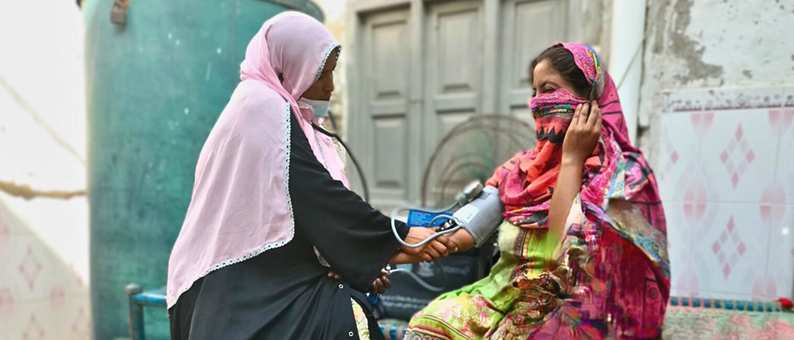
Take Lady Health Workers and community midwives in Pakistan as an example.
During the 2022 floods, one-third of Pakistan was under water. Nearly 8 million people had been displaced. Lady Health Workers in Sindh Province, working through a Pathfinder program, reached communities with 20,000 dignity kits for safe pregnancies. They ensured pregnant women were connected to community midwives who delivered babies safely at birthing stations. The stations replaced health clinics that were under water. After the floods, Lady Health Workers reached families with information on feeding, hygiene, and health for mothers and children, easing the floods’ toll on health and well-being.
During the COVID-19 pandemic, Lady Health Workers gave tips on how to prevent infection. They also referred people for treatment. Women in their communities trusted them. They reached women isolated at home and at risk of abuse. They gave them support and information on where to get gender-based violence services. Since 1994, when the Lady Health Worker program began, Lady Health Workers have made the number of children fully vaccinated nearly double. They have contributed to cutting maternal and newborn deaths and increasing family planning access.
Community Health Extension Workers, nurses, and midwives in Nigeria—mostly women—have also saved numerous lives. For example, through the Saving Mothers Giving Life program, Community Health Extension Workers in Cross River State provided emergency obstetric and newborn care services in rural communities. They referred cases they were unable to treat to higher-level health facilities, where nurses and midwives were on-call to handle complications and emergencies. Health facilities supported by the program experienced a 66 percent decrease in material mortality over three years.
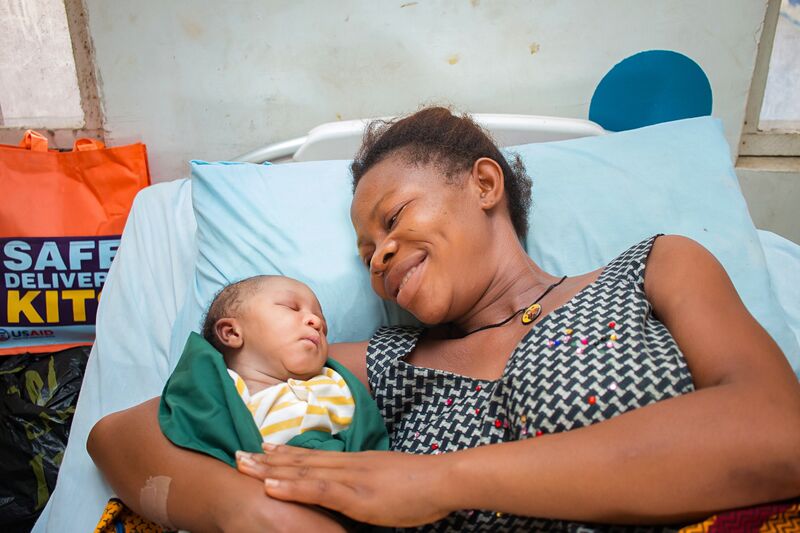
In Nigeria’s Akwa Ibom state, Community Health Extension Workers learned how to offer clinical contraceptive methods—injectables and implants—at local health facilities, a task once reserved for higher-level health providers. This transformative shift increased women’s access to contraception through providers they trusted and alleviated the burden on overtaxed healthcare providers.
What we need to do now
Investing in women in the health workforce fosters health, development, and prosperity. But to reap the greatest return on investment, we must protect, pay, promote them, and put policies in place that formalize them within health systems.
Formalize community health workers within health systems. Community health workers, nurses, and midwives must be fully integrated into health system strategies, plans, and budgets. This will ensure they have the protections, supplies, resources, and support they need to do their jobs well. Connecting community health workers, who are well supported by the health system, to nurses and midwives through strong referral systems saves countless lives.
Provide adequate training, supervision, and mentorship. It is important that community health workers without much formal training have adequate supervision and mentorship from higher level providers, like nurses and midwives. They also need to be incorporated in supply chains. Without this, community health workers won’t have the basic equipment and medicines they need to deliver community-based primary health care.
Elevate women through woman-friendly policies and promotions. Women health workers must receive maternity leave, childcare support, and protection against workplace harassment and discrimination. They need opportunities for continuous professional development and career growth. When promoted into leadership positions, they can make valuable contributions to health decision-making and policy development. As the Frontline Health Workers Coalition urged in their recent report, women health professionals must be included on emergency response committees, and in budget planning and donor consultations.
Pay women a fair wage. And, finally, women health workers need to be paid. Women in Global Health estimates that 6 million women health workers are unpaid or underpaid, and that men earn 28 percent more than women in the health sector. Women health workers continue to subsidize global health with their unpaid labor, yet the returns on offering them a fair wage are obvious; Ethiopia’s community-based health extension program, a health workforce made up of women on the government payroll, for example, returned between $1.54 and $3.26 for every dollar invested, enhancing gender equity, women’s empowerment, health employment, and productivity.
We call on governments and the global health sector to recognize the transformative contributions of women in the health workforce by developing and implementing policies to ensure their protection, pay, and promotions. Without this, the power of women in the health workforce will only be another missed opportunity.
